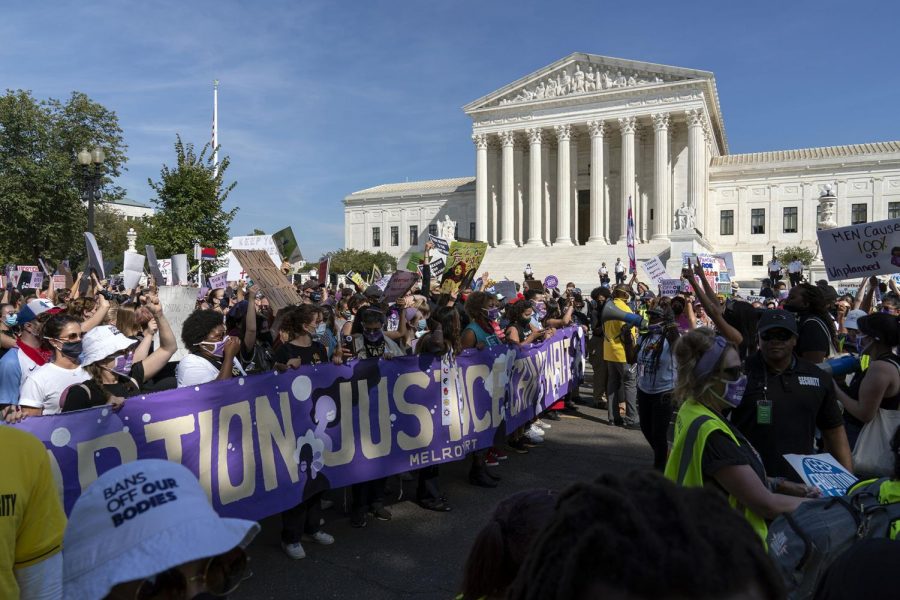The March for Women’s Rights
The March for Women’s Rights
October 31, 2021
On October 2nd, the world took to the streets to once again protest against bans on reproductive healthcare for women. Marches and rallies were held across the nation in honor of protecting the right to safe and legal abortions. The event sent a clear message to the world, especially lawmakers, that people are still angry and will not rest until the issue is resolved.
The catalyst of this movement was the recent Abortion law passed by the Texas government. The controversial legislature, infamously coined the Heartbeat Law, prohibits women from receiving abortions at only six weeks pregnant. This is the time when the fetus develops a heartbeat. Most women are unaware of their pregnancies at this point in time. Pregnancy tests are not effective until the woman is at least three and a half weeks pregnant, giving them two weeks or less to find a local reproductive care provider. Lawmakers are implementing so many restrictions on women that the law is now considered a ban on abortion.
Abortion may be protected by the constitution under the Roe v. Wade Supreme Court case of 1973, but pro-life lawmakers are currently doing everything in their power to stop as many abortions as possible without formally placing a complete ban unconstitutionally. Restrictions on abortion have been placed in almost every state over the decades post-Roe v. Wade, especially within the last few years. There have also been a handful of attempts to overturn the Court’s decision. None of which have been successful yet, but attempts were made before the court was comprised of pro-life judges who were open about their views, even before being appointed. With the addition of Justice Amy Coney-Barret, the Supreme Court now has an overwhelmingly conservative majority of judges. This makes the issue of protecting reproductive rights critical to pro-choice activists as the threats to overturn the historic decision are now more real and impending than ever.
When the ratification of the Heartbeat Law was announced to the public, the world erupted in anger and frustration against the Texas government. Many women were scared for the future of their reproductive rights in the United States. After all, the Roe v. Wade decision is one that protects access to safe abortion, and it being threatened in this way could erase all of the progress made by pro-choice activists over the last 50 years.
The pro-choice movement took these new progressions and collaborated to create a community of rallies and marches spanning the entire country on the same day. The reasons for these events were rather somber and aggravating to many, but it was still a chance for people of all genders and ethnicities, across all generations, to come together for a day and fight for a common cause. The most central march was located in Washington D.C., where protestors were given the opportunity to fight for their rights directly in front of the lawmakers they were trying to communicate with. This is not to say that the only place people could advocate for their opinions was at the nation’s capital. The Women’s March organization also spearheaded similar events in almost every major city in the country.
The efforts made on October 2nd were a major expression of our rights to stand up for important causes. There is one thing for sure and that is that the world has shown how deeply so many people care about the issue of reproductive rights and will continue to whether Roe v. Wade remains constitutional or eventually is overturned.
